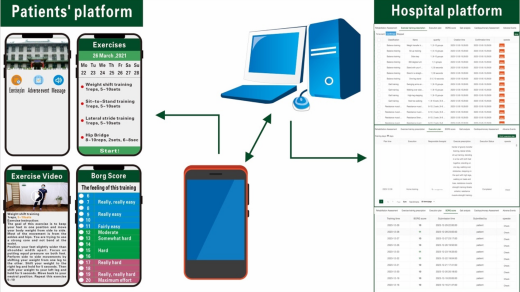
It’s well known that Parkinson’s disease can impair a person’s ability to perform movements like grabbing a coffee cup, with one side of the body often more affected. But a recent study by University of Alberta researchers shows that the disease also affects how people perform movements mentally, something called motor imagery.
“Even when people with Parkinson’s think about movement, it’s different for their more affected side,” says Kathryn Lambert, PhD candidate in the Faculty of Rehabilitation Medicine and lead author of the study.
As Lambert explains, all goal-directed movements emerge from a mental plan. Before any physical movement happens, our brain gathers information about our body’s position and envisions all the steps needed for the movement.
“We do this really quickly and automatically,” she says. “Then the brain takes that plan and transforms it into an action in our body.”
Parkinson’s is proposed to influence proprioception and kinesthesia — one’s awareness of their body’s position and movement, respectively — which leads to disruptions in this process.
“If you have impairments in proprioception and kinesthesia, it may be a little harder to generate an accurate motor image in your head because you have less accurate information coming in from your senses,” says Lambert.
Lambert and her collaborators found that temporal accuracy — the sense of how long it takes to perform a movement — differed between the more and less affected side of the body. In particular, participants were more likely to overestimate the speed of their movements when the action involved their more affected side. They also examined participants’ overall cognitive function and found that their performance on a cognitive screen predicted temporal accuracy, but only for the more affected side.
Since the sensory input people with Parkinson’s are receiving is less accurate, their motor imagery is also less accurate, which may translate to increased struggles with physical movements.
“What they need to do to create an accurate motor image is to rely more on cognition and put more effort into the imagery to make it accurate,” says Lambert, noting that there was no link between cognition and temporal accuracy on the less affected side of the body.
“Those senses of body position and movement are less disrupted, so they don’t need to compensate in the same way.”
Lambert assessed the study participants with three tests commonly used in rehabilitation to measure cognitive function, motor function, and depression. The latter was included because depression rates are fairly high among people with Parkinson’s and Lambert wanted to account for that as a potential influence.
“Parkinson’s has traditionally been defined as a movement disorder, but it’s increasingly acknowledged that there’s a lot more going on with the disease.”
An occupational therapist by training, Lambert became interested in this area of research when she noticed that people with Parkinson’s often had an inaccurate perception of the way they were moving. For example, they’d believe they were walking rapidly, but after seeing a recorded video capturing their movement, they would realize they were significantly slower in reality.
“If someone is perceiving their movement wrong, it can actually be quite dangerous,” says Lambert, noting that this could lead to a higher risk of tripping or falling.
Since struggles with motor imagery could contribute to or exacerbate the physical impairments people with Parkinson’s face, rehabilitation approaches that account for impairments in motor imagery may be beneficial for addressing physical symptoms as well, she says.
Rehabilitation interventions that target these issues with motor imagery focus on providing extra visual information or cues, such as asking people with Parkinson’s to record and watch video of themselves walking, or telling them to listen to a song before walking that has a beat matching the pace they want to achieve.
“It’s a matter of providing additional support before they do the movement to help keep them on track.”


